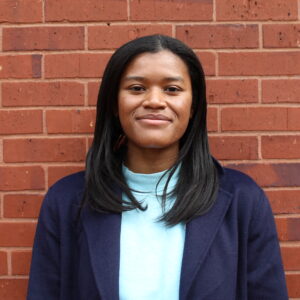AI Helps Understand Influences And Needed Actions
In a recent panel on the significant decline in high school graduates, college enrollment executives and a tech executive talked about how colleges are planning now to deal with the challenges they will face in the future from the ripple effects of the pandemic combined with the already forecast demographic cliff of 2025. Their efforts include not only programmatic changes but also employed advanced analytics driving them to recruit students in new regions. Noted AI expert and adjunct professor, Andy Hannah gives additional insights into how higher education is shifting to more personalized education paths for students, which has the potential to improve not only the retention numbers but make recruitment efforts more success as well. A full transcript of their comments is available at: Adjusting to the Demographic Pothole in College Admissions.
Changes In Recruiting Techniques Mean More Information Is Needed
Keith Ramsdell is the vice president for enrollment management and marketing at Ashland University near Cleveland, Ohio. Ashland enrolls about 8,000 students—6,400 in undergraduate programs and 1,600 in graduate programs. Interestingly, it has the largest correctional education program in the country, with 3,500 virtual students.
When asked about how the pandemic has altered recruitment, Ramsdell says, “The majority of us didn't anticipate how long the pandemic would persist. We couldn’t recruit using our traditional techniques and strategies. We were concerned about the numbers but discovered that many online and graduate programs increased in enrollment.”
To gain ground, Ramsdell looks at how student populations and individual programs have been affected by the pandemic. An analysis of Ashland’s in-state versus out-of-state applicant pool showed that students were making decisions to stay closer to home. The out-of-state numbers have Ramsdell worried. There is also concern about first-generation students and students of color. The pandemic has those student numbers down and staying closer to home as well.
To reach out to all current and potential student populations, Ramsdell's team has been using a steady stream of email, text messaging, and phone calls. Ashland’s president, Dr. Carlos Campo, has gone one step further by presenting a series of town halls for the immediate campus and broader communities. Those informational meetings have been well received and offer a chance for participants to ask questions and get answers in real time.
Ramsdell relies on technology for student support and retention, too. Analytical solutions and communication tools help Ashland encourage students, especially first-generation and students of color, who may not have an inherent support system. It’s an Ashland priority.
“Traditionally, we’ve recruited directly from high school populations who would primarily live on campus. We're just starting to look at how to stabilize and even expand that population—looking towards 2025. We know from the data that students, nationally, are applying to colleges later this year. Additionally, working with corporate partners helps us promote our undergraduate and graduate degree and completion programs,” says Ramsdell.
It’s Vital To Predict Shifts In Enrollment Reliably
Dr. Blake Bedsole of Arkansas Tech, Russellville, Arkansas, is vice president for enrollment management. Arkansas Tech has just under 12,000 students and offers everything from workforce credentials and associate's degrees to bachelor's, master's, and doctoral degrees.
“I am more confident in the long term than I am in the short term. A lot of us in enrollment management talk about this as a science, but I feel it's more of an art during the pandemic. We can’t rely on predicting yield the way we did things in the past. We've worked with the Othot team to help us predict impact yield more reliably,” says Bedsole.
This past year, Bedsole looked at striations within his applicant pool. “At Tech, we’re 94% Arkansan, so what’s happening in Arkansas is my first concern, and then the contiguous states after that. Further breakdown includes in-state, out-of-state, and even within-state traveling distances. Students chose to stay closer to home for Fall 2020, and we are trying to market to that for Fall 2021,” says Bedsole.
The pandemic is altering the way Tech handles campus invitations. The institution cannot accommodate the volume of students who visited the campus before COVID, so Bedsole and his admissions team have become more strategic about invitations for tours and visits.
“Normally for our Senior Day, we could have up to 1,800 freshmen and their families on campus at the Coliseum, and surroundings, but due to COVID restrictions we couldn’t go over a group size of 50. We’ve had to modify our approach to spreading it out over multiple days, being smart about who we invite, and incorporating virtual presentations,” says Bedsole.
Bedsole is paying close attention to cultural and demographic shifts too. He knows that Arkansas is projected to have a substantial increase in Hispanic students, and ATU is seeking ways to engage this community in more meaningful ways. “What we can do, whether it's part of prior learning assessment, or certificate workforce development programs, is offer online programs to meet all of our student needs.”
Tech has also begun an initiative focused on recruiting students who have dropped out of college and are yet to enroll at another institution. The use of technology-enabled learning is essential in this effort because more than 95% of those students opted for online degrees.
Data Allows Better Targeted Messaging To Students
David L. Hautanen Jr. is vice president for enrollment management at St. Mary's College of Maryland, a public liberal arts and sciences college, designated the standalone honors college for the state of Maryland. “We offer an honors experience for all students in and out of the classroom; It's our DNA,” notes Hautanen. St. Mary's College has about 1,500 students, enrolling between 450 and 500 new first-year and transfer students each year.
“Like most institutions, we had to cancel our on-campus programs, but we’re small and nimble. We quickly pivoted to new strategies to offset the loss of this programming. We’ve moved from on-campus programming to more virtual programming to help influence students at all stages of the enrollment funnel,” says Hautanen. With limited financial aid resources, Hautanen’s analytics are focused on leveraging need-based aid in a way that best influences students to enroll by taking into account a range of factors that paint a complete portrait of individual financial needs.
“With our waterfront location, we know that if a student visits campus, they are significantly more likely to enroll. The pandemic took away the ability to host our large open house and admitted student events,” says Hautanen. Beginning in August, St. Mary’s College was able to offer one-on-one campus tours, which helped contribute to their applicant pool. They also implemented a very significant digital recruitment program. Using analytics, St. Mary’s College digitally targeted parents and high-school counselors, and revised messaging designed to engage students and their parents.
“We work hard to personalize the recruitment experience based on our analytics. A personalized experience is our brand. With the pandemic, we also focused our messaging on our being a small, rural institution located in a beautiful, safe place. It was successful. We enrolled the second-largest new student class in the last five years. About two-thirds of our students who normally live on campus lived on campus this fall. Our ethos at St. Mary’s is about responsibility to ourselves, each other, and to the environment. I think that helped our enrollment success,” says Hautanen.
As a public institution, St. Mary’s College is committed to serving underrepresented students in the state of Maryland. “Our analysis shows the demographics shifting. The traditional college-going population is declining, and the student populations which are historically underrepresented in higher education are increasing,” says Hautanen. Hautanen is working strategically to build relationships with various communities across the state, with community-based organizations, and with specific populations such as first-generation families who may have concerns about sending their students to an honors college. They are also building and strengthening relationships and partnerships with community colleges. “We want all students with the talent, ambition, and potential to be successful to know that they have a place at St. Mary’s College,” says Hautanen.
“One of our approaches, as we're working to build these relationships, has been to intentionally develop programmatic support services on campus. We're monitoring student success and various retention measures across the student life cycle, particular attention to first to second year retention overall and through an equity lens, to ensure success. We need to be able to better differentiate where we dedicate resources and use those resources more efficiently,” Hautanen adds.
Advanced Analytics Guides Decision-Making
Andy Hannah is a co-founder and chief partnership officer at Othot. He is also an adjunct professor of analytics at the University of Pittsburgh that recently published a deep dive into how institutions can deal with the upcoming demographic cliff.
“At Othot we have an advanced analytics platform that guides college and university decision-making throughout the student lifecycle by understanding individual students better. Our goal is to help institutions enroll the best-fitting candidates who will graduate, move on to great occupations, and remain engaged alumni.” Hannah says that you need to understand the data and analytics about an individual from the first day and then every day afterward. The learning journey begins in high school, goes through college/university, and afterward as engaged alumni. “We use one platform to optimize the total student life cycle,” says Hannah.
Hannah says you can break analytics into four parts—descriptive, diagnostic, predictive, and prescriptive—in order to move to a deeper understanding of the influences affecting an institution. He believes COVID has provided a view of the future (i.e., that in the second half of the decade, fewer high school graduates are going to college).
“It is important to look beyond traditional recruiting. A whole different distance-learning concept needs to be figured out as well. That's going to open up our universities and colleges to a group of students that aren't necessarily in their backyards. Our most forward-thinking colleges and universities are looking ahead to do that,” says Hannah
Hannah believes that to build a robust funnel for recruiting students, institutions need to offer programs that fit specific student needs. “It’s gotten more complicated since moving away from test-oriented environments for admissions. Getting less data about students means we need to be more sophisticated about building relationships. We need to start personalizing at an educational and institutional level, so we can match individual student expectations as they start to look at colleges and universities,” concludes Hannah.








